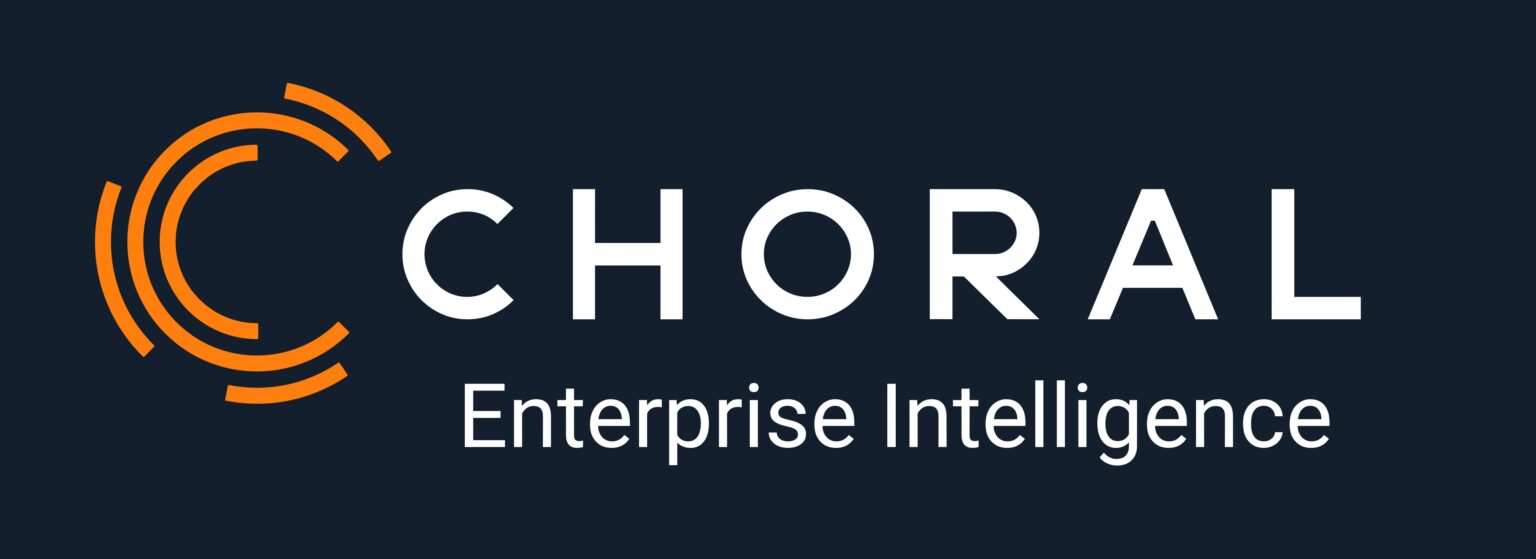My journey to creating Choral is rooted in over two decades of experience at the forefront of enterprise technology. As I navigated the complex landscapes of three diverse industries, a common thread emerged – the persistent challenge of harnessing data for effective decision-making. My career path took me through pivotal roles:
- Global Chief Information Officer at GE Power Systems, a leader in industrial manufacturing
- Global CIO at The Coca-Cola Company, a giant in consumer goods
- Head of Technology and Operations at BMO Financial Group, a major player in North American banking
Each of these positions offered a unique vantage point on the critical need for consolidated data and insights in enterprise leadership. From the boardroom to the front lines, I witnessed firsthand how every tier of an organization – be it the board of directors, the CEO, the executive committee, or business unit leaders – craved comprehensive information to drive growth and efficiency.
The irony was stark: despite having access to cutting-edge technology and a plethora of solutions, we lacked a streamlined process or tool to rapidly connect and leverage our data.
This gap became glaringly apparent when tackling complex business challenges such as:
- Cost reduction initiatives
- Digital transformation projects
- IT infrastructure overhauls
- Acquisition integrations
It was this recurring frustration – the inability to quickly “wire up” the necessary data to solve these multifaceted problems – that planted the seed for Choral. I envisioned a solution that could bridge the gap between our vast data resources and the actionable insights our leaders desperately needed.
Choral was born from this vision – a tool designed to do what I had always wished for in my executive roles: to swiftly consolidate, analyze, and present data in a way that empowers leaders to make informed decisions efficiently and effectively.
The problem: fragmented analytics solutions and data
The inspiration for creating Choral stems from the need to simplify and integrate financial and operational analytics for enterprise management. The problem can be described as follows: data and analytics solutions to organize, analyze and present this data, are dispersed across various business units, functions, and IT systems, leading to a multitude of different reports and analyses. This fragmentation makes it very difficult for management to get a unified view of the company connecting financials and operations. This, in turn impairs leaders’ ability to make well-informed, strategic and operational decisions. Additionally, solving this problem of an enterprise’s fragmentation is costly, resource-intensive, and time-consuming.
A few examples of where, in my experience, this problem hinders management’s ability to get things done
Managing Cost Efficiency
Over the years, I’ve been involved in numerous cost-reduction initiatives within companies. In each case, we assembled a team of business and functional leaders to identify and capture cost reduction opportunities. In all cases, an integrated fact base was central to achieving success.
However, creating this fact base proved to be a significant challenge. Specifically, the data was often not integrated across business functions and lacked detail, making it difficult to pinpoint precisely how to reduce costs effectively.
Transforming the Enterprise
My experience with transformation initiatives also highlighted the need for an integrated, granular fact base.
Transformation objectives included: revenue growth, improved customer experience, cost efficiency, and better risk management. Achieving these outcomes required a solid fact base to evaluate specific opportunities in each area. Here again, the required data and analytics were not readily available which hindered the team’s ability to assess opportunities, plan the transformation program, monitor its execution and benefits.
Again, it is not that the data did not exist, but it was near impossible to target, easily acquire, and to easily interconnect it across different systems and technology, domains and business units, structured or unstructured. There simply was no map, process or solution to walk a team of different expertise through this in a structured manner.
Planning and Executing an Acquisition Integration
Leading an acquisition integration effort, we faced the same challenges as in cost efficiency and transformation. In this case, however the problem was exacerbated by the fact teams were dealing with two independent entities with distinct information systems, data and analytics. This made it difficult to analyze the two companies’ side by side to identify, quantify and monitor synergies in areas such as financials, human resources, suppliers, facilities, customers, sales, and risks.
Leading Information Technology
As a CIO, I faced multiple challenges including delivering operational excellence, managing IT and cybersecurity risks, transforming IT to meet increasing demands, improving IT efficiency, and working with business / functional leaders to develop a digital transformation program for the enterprise. Achieving these outcomes required a comprehensive and integrated fact base, encompassing financials, human resources, applications, infrastructure, IT operations, risk, suppliers, and projects. Given the high complexity of these factors, I sought a more effective approach to create an integrated understanding and analysis of information technology and its impact across the enterprise.
The vision for a solution
The ideal solution would allow enterprises to enhance organizational effectiveness, speed, and efficiency. Specifically, it would:
Enhance Financial and Operational Visibility and Insights
Executives and leaders would achieve greater visibility and transparency in their enterprise financials and operations. They would be able to independently answer their own questions through a unified application that delivers comprehensive and interconnected data and analytics across all functions and business units regardless of where the data resided. This holistic view would emphasize the connections between financial performance, operational performance, risks, and enterprise capabilities, including people, processes, and technology.
Improve Problem Solving and Collaboration
Problem-solving and collaboration would see significant improvements through multi-domain, multi-business unit insights and analytics. This would cover areas such as financials, revenue growth drivers, operational efficiency, and risk factors. For instance, to enhance cost efficiency, teams could analyze data across various domains, including financials, human resources, information technology, suppliers, facilities, and business processes. The solution would provide a single source of truth, facilitating informed decision-making and more effective teamwork. It would also, by design and native functionality, create the wiring and connectivity needed between the different domains and business units.
Increase Analytics Speed, Agility, and Efficiency
The solution would speed up the deployment of advanced analytics, enabling implementation within days or weeks rather than months or years. It would enhance flexibility by rapidly organizing and integrating new data sets to refine existing solutions or address emerging challenges. Additionally, it would support cost-effective operations by allowing for the development and maintenance of analytics solutions with smaller teams and reduced costs. The solution would have, by design and structure, a map pointing to the most important data needed and facilitate the interconnection of this data from across an enterprise to a single ‘pane of glass’ in a digestible format.
My transition from executive to founder and entrepreneur
After over 20 years as a technology executive, I ventured into entrepreneurship and innovation with Choral, marking one of the most extraordinary phases of my career. As an engineer and problem solver, developing Choral over the past several years has been a journey filled with complex challenges. Making the complex simple is hard and requires iterative problem-solving. Finding the optimal solution to a problem often demands multiple iterations, starting with a preliminary approach and refining it to enhance the outcome.
Through countless iterations, we’ve arrived at Choral’s current design and technical implementation. Each iteration has focused on making it easier for users to 1) be able to quickly identify the most important data from large data repositories and then have it synthesized to be viewed and interpreted easily, and 2) for individuals and teams to be able to implement existing solutions and create new solutions easily and efficiently. The result is Choral’s distinctive architecture and third-generation technical implementation.
Three key features set Choral apart:
Analytics Solutions Library
Instead of beginning with raw data, we start with the solution. This top-down approach is more efficient, as it allows us to work from an 80% solution and refine it, rather than starting from scratch.
Data Mesh
Choral includes a data mesh that organizes and connects both structured and unstructured data. This is crucial because integrating data from multiple sources to make sense of it is one of the biggest challenges in building analytics solutions. This is typically where all enterprises, even those with the correct resources, fall and fail to provide a usable and sustainable solution – regardless of the tools used to compile the data.
Rapid Implementation Method
Traditional analytics solution design involves many roles and steps. The outcome can vary widely in timeline, cost, and quality depending on the team’s skills and experience. Choral’s rapid implementation method simplifies this process with step-by-step instructions, intuitive authoring tools, and examples, enabling faster and more cost-effective solutions. Choral is unique in the way its solutions library and data mesh work cohesively to codify expertise and wire up data to make it easy to build and update apps – this normally requires hands-on data architects and solutions developers.
Next steps
I’ve learned so much about data and analytics over these years, and I’m excited to share these insights through a series of upcoming blogs. The benefits of the Choral system continue to be realized daily by our team internally and will be by our partners and customers for the foreseeable future. We are excited to create a community where these insights and learnings can be shared. Thank you for your interest in this project. I hope the methods, software, data models, and solutions we’ve developed prove valuable for managing your enterprise.
You can find additional information on our website at: www.choral.com
Jean-Michel Ares


